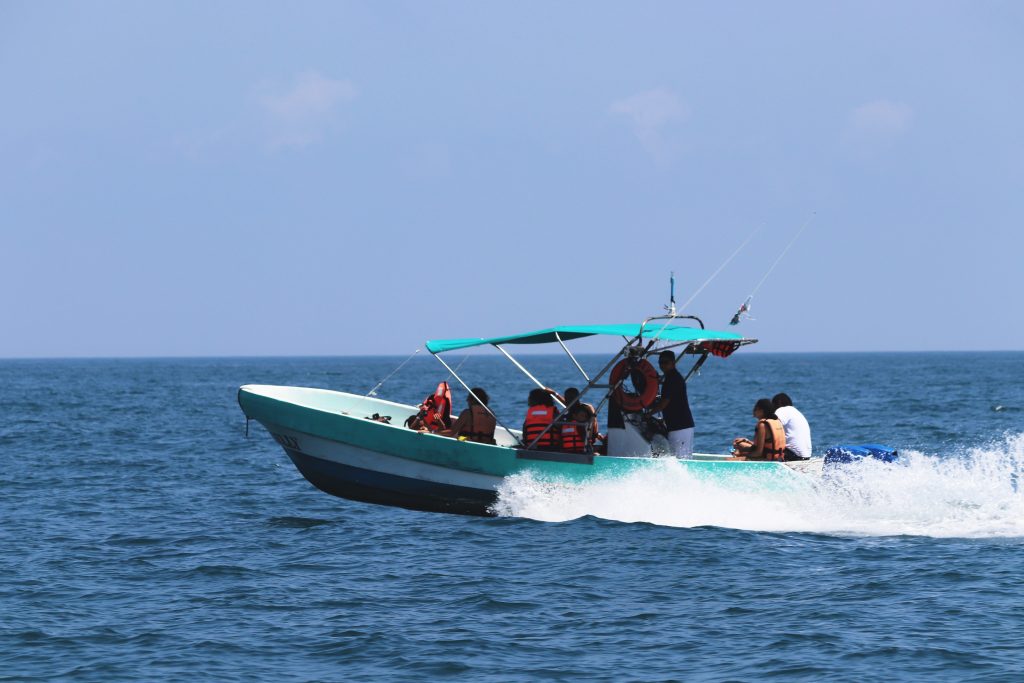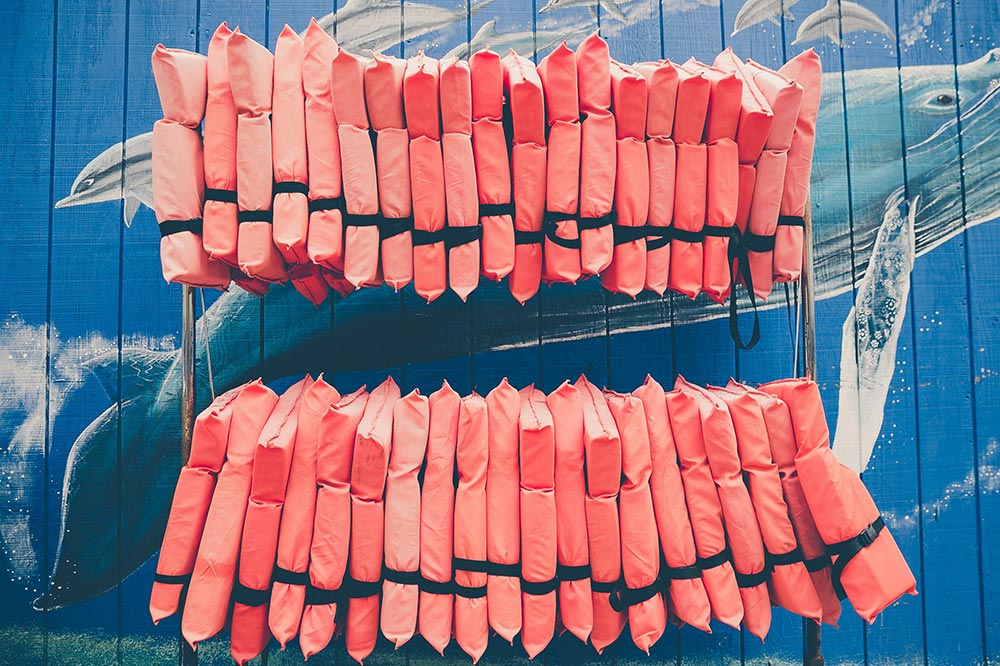The open water has a special allure for many people. There are countless ways to enjoy the water, whether it’s the joy of fishing, the thrill of speeding across the waves on a jet ski, or simply lounging on a boat with your family and friends. But wherever there is water, there is also danger. That’s why it’s crucial to prioritize safety and take precautions to prevent accidents. Regarding water-based activities, one of the most essential pieces of safety gear is a life jacket. In this blog post, we’ll explore the importance of life jackets, the types of life jackets available, how to properly fit a life jacket, and how to care for it.
The Lifesaving Role of Life Jackets
Life jackets are designed to keep individuals afloat in water. They provide buoyancy and prevent drowning by keeping the head and chin above water. This is critical in situations where someone becomes injured or unconscious. When wearing a life jacket, the individual can stay afloat and breathe while waiting for help or rescue teams to arrive.
In Australia, the importance of wearing a life jacket is paramount. According to the Australian Maritime Safety Authority, over the past decade, around 46% of boating fatalities occurred from drowning, and of those, 88% were not wearing a life jacket. These statistics emphasize the need for boaters to wear life jackets each time they’re on the water.
When it comes to children, having the correct size life jacket is essential. Baby life jackets are designed for infants under 30 lbs, while toddler life jackets are suitable for children up to 50 lbs. Ensuring the life jacket fits correctly is crucial to provide the necessary buoyancy levels. In addition, always ensure your child is wearing the correct size and type of life jacket depending on their activity level and water conditions.
Types of Life Jackets
Type I: This life jacket provides the most buoyancy and is designed for open, rough waters where rescue may take a while. It is also known as an “offshore life jacket.” These jackets are less comfortable and bulkier than other types, but they offer the highest safety level. They are suitable for extended survival times in rough, open water, where rescue may be slow.
Type II: This type is suitable for calmer waters, such as lakes, and is known as a “near-shore buoyancy vest.” They offer less buoyancy than Type I and are less bulky, making them more comfortable. They are appropriate for those boating near shore where quick rescue is more likely.
Type III: These life jackets are also known as the “flotation aid vest,” the most comfortable and popular life jackets for people who enjoy water sports, such as kayaking and water skiing. They offer less buoyancy than Type I and Type II and are unsuitable for rough areas or open water. They are designed to support the head and keep the torso vertical.
Type IV: This life jacket is not worn on the body but instead thrown to someone in need. This “throwable device” is often a cushion or ring buoy and is suitable as a backup to wearable life jackets and a way to help someone who has fallen overboard stay afloat until rescue arr.
Type V: This jacket includes specialty-use devices such as work vests, deck suits, and purpose-built inflatables. Because they are not intended for general use, these jackets come in various designs.
Proper Fit and Sizing

First and foremost, a life jacket should fit tight and snug. Many people believe loose-fitting life jackets are more comfortable, but that’s not true. In an accident, a loose life jacket can slip off or ride up, which may expose you and increase the risk of drowning. Therefore, choosing a life jacket that fits you properly is essential, with minimal space between your body and the jacket.
Secondly, it’s essential to consider the weight and age of the person wearing the life jacket. Different types of life jackets are available for adults, children, and infants. An adult life jacket will not provide enough protection for a child, and vice versa. So, always choose a life jacket based on the weight and age of the user. There are also specialized life jackets, like baby and toddler life jackets, with extra head support and buoyancy.
Another misconception about life jacket sizing is that you only need to wear one when boating in rough water or at high speeds. However, accidents can happen anytime and anywhere, even in calm waters. It’s always wise to wear a life jacket on a boat, regardless of the water conditions. In fact, most boating fatalities happen due to drowning, and the majority of those people weren’t wearing a life jacket.
Additionally, make sure the life jacket is fastened correctly. A life jacket with an unfastened or broken buckle is just as risky as not wearing a life jacket at all. Therefore, before heading out on your boat, ensure you and everyone else wear a properly fitted and fastened life jacket.
Lastly, it’s essential to maintain and store your life jacket properly. After each use, rinse it with fresh water and let it dry naturally. Store it in a cool, dry place without exposure to direct sunlight. Life jackets that are not stored correctly may lose buoyancy and, as a result, may not provide adequate protection during an emergency.
Caring for Your Life Jacket
Clean Your Life Jacket: Like any other garment, a life jacket can accumulate dirt and grime over time. You’ll want to clean it well regularly to keep it in top shape. Use a gentle detergent to wash it by hand, and avoid putting it in the washing machine. Use a soft brush to remove dirt or debris from the straps and buckles, and rinse everything thoroughly with cool, clean water.
Store Properly: When your life jacket isn’t in use, it’s important to store it properly to prevent damage and prolong its lifespan. Store it in a cool, dry location out of direct sunlight and away from any chemicals or fumes. Avoid hanging it by the straps or buckles, as this can stretch or damage them. Instead, lay it flat or hang it by the loop at the back of the neck.
Inspect Regularly: Even if you’re not using your life jacket frequently, you should inspect it regularly to ensure it’s in good condition. Look for signs of wear or damage, such as frayed straps or a torn shell. Pay close attention to the buoyancy material, which will keep you afloat if needed. If you notice any signs of damage, replace the jacket immediately.
Lifespan and Replacement: The lifespan of a life jacket varies depending on the material and frequency of use. Generally, a well-maintained life jacket can last five to ten years. However, if you’re using your jacket frequently, it may need to be replaced more frequently. If you need more clarification about the condition of your life jacket, it’s better to err on the side of caution and replace it.
Choose Safety, Choose Life Jackets
In conclusion, staying safe on the water is crucial, and wearing a life jacket can save your life. By choosing the correct life jacket for your boat and activities, ensuring it fits well, and caring for it properly, you can ensure its effectiveness in an emergency. Please don’t take any risks when it comes to water safety. Always prioritize safety and ensure a suitable and correctly fitted life jacket. Check out the selection of life jackets at the Boat Hut and browse the different sizes and types available to keep you safe and secure on the water.
FAQs about Boat Life Jackets
What is the primary purpose of a life jacket?
A life jacket’s main purpose is to provide buoyancy, ensuring the person wearing it stays afloat in the water, keeping their head and chin above the surface.
How many types of life jackets are there?
There are five main types:
Type I is for open, rough waters and offers the highest buoyancy.
Type II is suitable for calmer waters near the shore.
Type III is popular for water sports in calm conditions.
Type IV includes throwable devices like cushions or ring buoys.
Type V comprises specialty-use devices with various designs.
Why is the proper fit of a life jacket so important?
A properly fitting life jacket ensures maximum protection. If it’s too loose, it might slip off or ride up, exposing the individual to higher risks.
How do I know if a life jacket fits me correctly?
The life jacket should feel snug with minimal space between your body and the jacket. Ensure that all straps and buckles are fastened, and the jacket doesn’t ride up when you lift your arms.
Can adults and children wear the same life jacket?
No, adults and children have different life jackets based on weight and age. It’s crucial to wear a life jacket designed for the specific age and weight category.
What’s the best way to care for my life jacket?
Clean it regularly with a gentle detergent, rinse it with fresh water, let it dry naturally, and store it in a cool, dry place away from direct sunlight.
How often should I replace my life jacket?
A well-maintained life jacket can last five to ten years. However, if you use it frequently or notice any signs of damage, it may need to be replaced sooner.
Why is it crucial for children to have the correct life jacket size?
The right size ensures the necessary buoyancy levels, keeping the child safe. Jackets designed for infants and toddlers also offer extra head support.
What are the statistics related to life jacket usage in Australia?
According to the Australian Maritime Safety Authority, about 46% of boating fatalities over the past decade were due to drowning, and 88% of those were not wearing a life jacket.
Do I need to wear a life jacket even in calm waters?
Yes, accidents can occur in any water conditions. Most boating fatalities are due to drowning, and many of those individuals were not wearing life jackets, even in calm waters.

